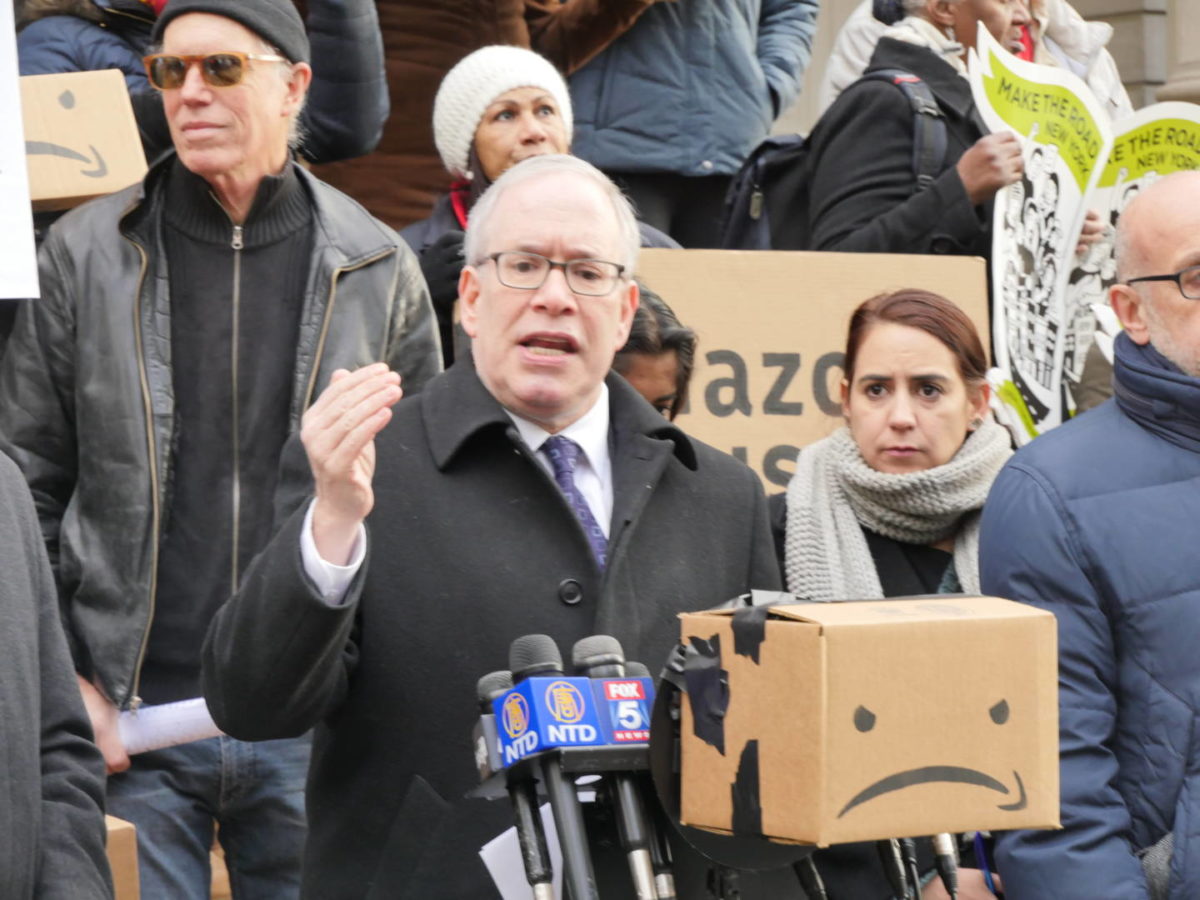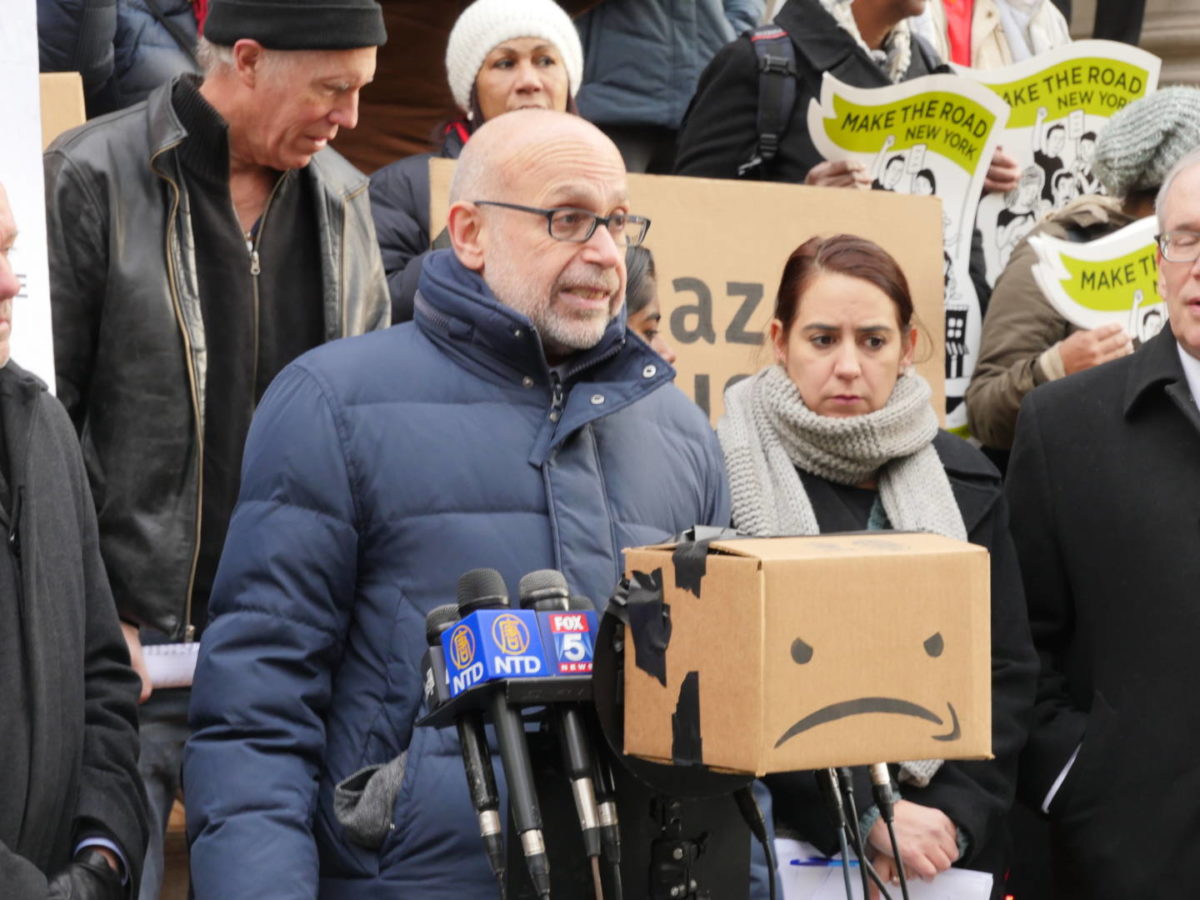
New York, NY – A newly-released safety report coinciding with the one-year anniversary of Amazon’s sprawling 855,000 square foot warehouse on Staten Island recommends the online giant finally abandon its anti-union stance and implement changes to a workplace that at least one hard-pressed employee says is “beating up” workers.
This past year, between January 3, and May 7, the New York Committee for Occupational Safety and Health [NYCOSH] surveyed 142 Amazon employees on Staten Island and found 80-percent of them were pressured to work harder or faster; 66-percent experienced physical pain while performing work duties, and 42-percent continued to experience pain even when they weren’t at work.
According to the NYCOSH report, musculoskeletal conditions — injuries to the back, neck, knees, etc. — represent the leading cause of physical disability in the nation. The rate of injury and illness at Amazon’s Staten Island facility is nearly seven-times as high as the national average for all industries, as well as a “stunning three-times as high as the average for all other warehouses nationwide.”
In a statement Dr. David Michaels, former head of the U.S. Occupational Safety and Health Administration and currently George Washington University School of Public Health professor, called the NYCOSH study an “eye-opening report documenting the pain suffered by the Amazon fulfillment center workers who are forced to work at dangerous speeds to ensure the packages Americans order arrive quickly.”
Stuart Appelbaum, president of the Retail, Wholesale and Department Store Union [RWDSU], said that Amazon needs to understand that “workers are not robots.”
“Amazon has a well -documented history of mistreating and dehumanizing its workers in the U.S. and around the world,” the RWDSU leader said in a statement. “NYCOSH’s report shows the impacts at just one facility, in just its first year of operating. Testing hundreds of thousands of workers physical limits is the wrong approach to increasing productivity. Operating at speeds where 80-percent of workers feel pressured means Amazon needs to hire more workers, under more sustainable speeds that don’t put workers’ lives in jeopardy.”
The NYCOSH report recommends Amazon implement an ergonomics program, reduce line speeds — and quit trying to block workers from organizing at the Staten Island facility.
Amazon execs bristled at the notion of unionization when members of the New York City Council pressed them on the issue during January hearings aimed at probing the $3 billion sweetheart deal to build a secondary headquarters for Amazon in Long Island City, Queens.
When asked to assure the City of New York that Amazon would remain neutral should future employees seek to organize, company VP Brian Huseman said, in part, that the “direct connection” it has with its employs is the best way to “respond to the concerns of the workforce.”
Amazon unceremoniously pulled the plug on its “HQ2” plans just a couple of weeks after that, on Valentine’s Day.
Amazon reportedly still holds a 10-year lease on property in Woodside, Queens where it plans to construct another warehouse or “fulfillment center.”

On February 12, an Amazon employee working at the Staten Island warehouse named Rashad Long was fired after speaking out about oppressive conditions at the facility.
In April another Amazon warehouse employee named David Jamel Williams said he was fired from his job in Edison, New Jersey after suffering an eye injury on the job and talking about the need to unionize.
“This report shows that Amazon, which has been criticized for its company culture in other cities, is running its Staten Island facility without regard for workers’ need to be treated as people, not robots. You can’t expect workers to work safely when they are going to be docked points if they take a break for a sip of water,” NYCOSH Executive Director and report co-author Charlene Obernauer said in a statement.
Debbie Berkowitz, Worker Health and Safety program director at the National Employment Law Project said NYCOSH’s new report clearly shows that Amazon workers on Staten Island are being hurt at “very high rates.”
“It is stunning that Amazon is not doing more to protect workers. The company has an obligation to provide safe conditions and make sure their workers are not sacrificing their health for company profits,” Berkowitz added.
The National Committee for Occupational Safety and Health reports that since 2013, more than a dozen Amazon workers have died on the job, or near the job.
Amazon has not yet responded to requests for comment.
Click here, to read the full NYCOSH report.

